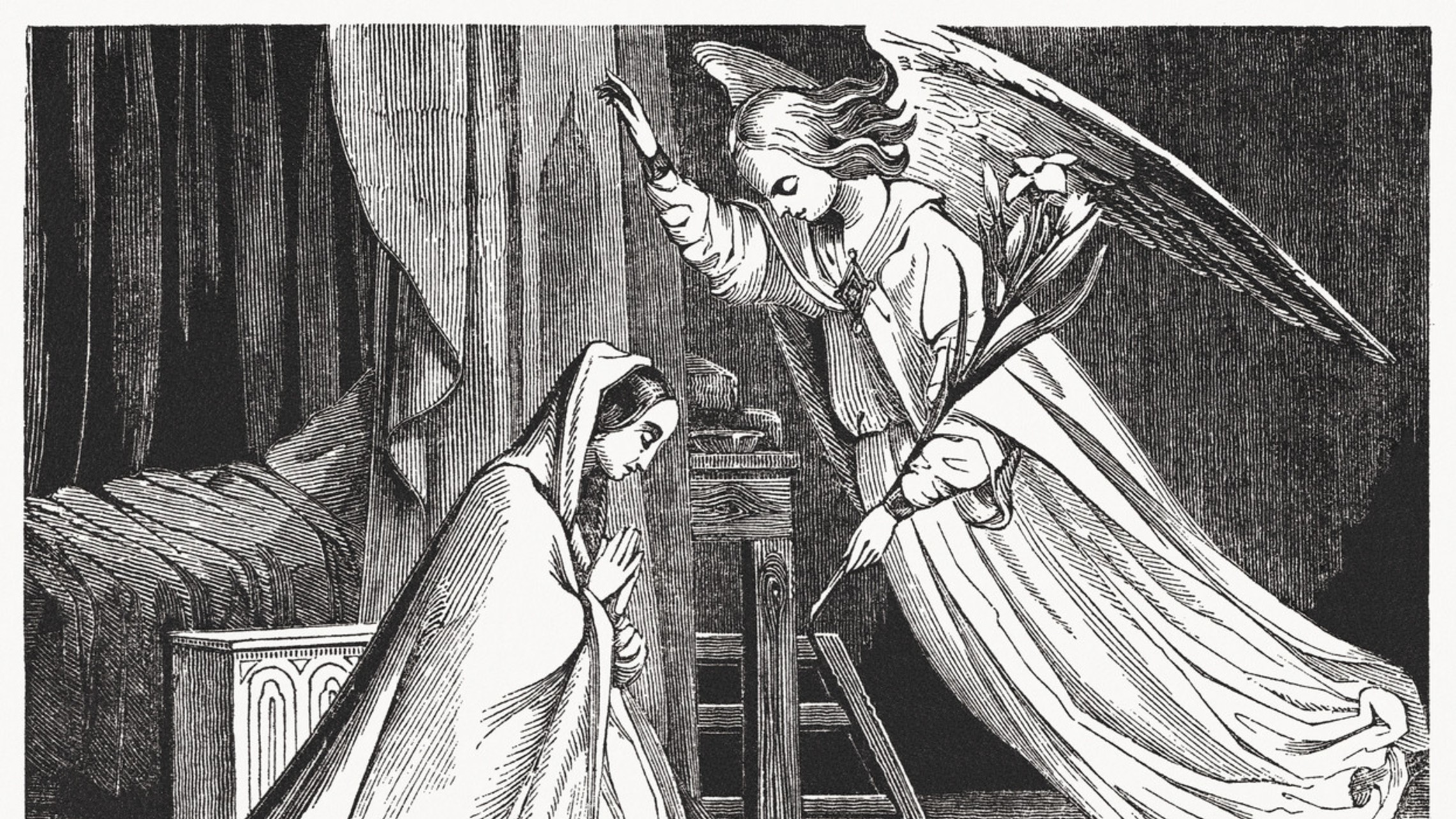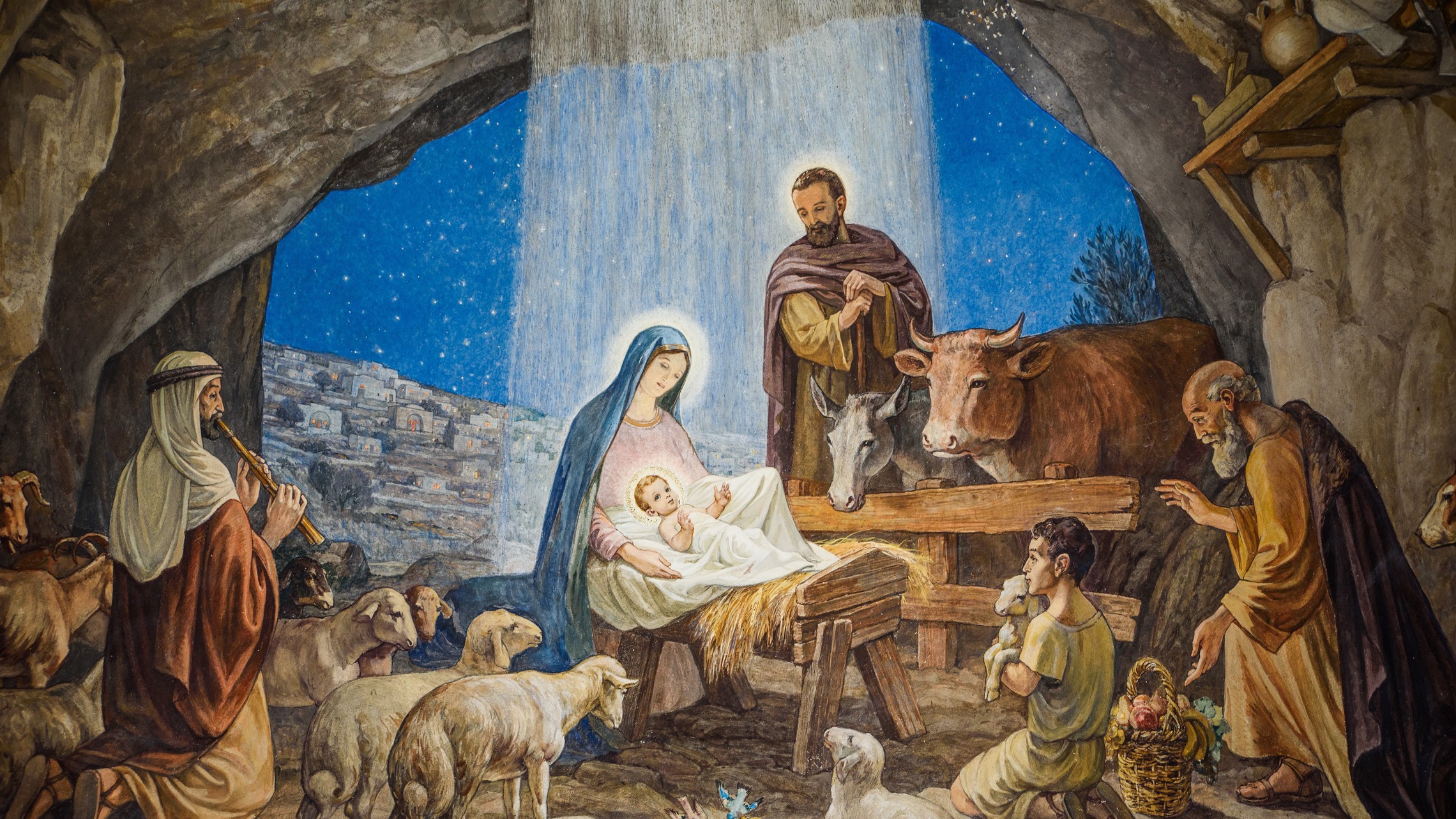Saint Agnes - The Joy of January 21

A Hot Topic
St. Agnes and Other Hot Topics
By Fr. Frederick Edlefsen
Saints are good subjects for novels. Not so much for short stories. Even less so for history books. Holiness doesn’t have a story line. It has several story lines that are hard to follow: the saint’s path to holiness, the historical context, the cast of characters, the forces of good versus evil, the personal trials, the works of grace, the role of the Church. But the main character in a saint story is invisible: the Holy Spirit. This throws historians off. Moreover, historians scrutinize. But the Holy Spirit, who’s hard enough to assess because He’s invisible and subtle, just “goes away” when scrutinized. That’s why historians are better at writing about sinners and than saints.
For saint stories, folklore is better than history. Storytellers are not afraid to be unhistorical. They can illustrate how the Holy Spirit works in history to prepare a New Creation beyond history. Legends see “heaven on earth” in the “life of the saint.” Hence, we get fantastic tales of miracles and even bizarre works of charity that evoke a sense of the supernatural. St. Nicholas, for example, is said to have raised people from the dead – notably three murdered boys who were being sold as ham (that was before USDA inspection). He ransomed would-be prostitutes by paying their dowries for legit husbands. He miraculously increased wheat supplies on a cargo ship so famine victims could be fed without the sailors being hung for theft. These tales are fascinating, holy, spurious, wonderful, weird and unhistorical. Historians are inept at telling these tales because, like lawyers, they are professional skeptics and fact czars. Anything that evokes eulogies or devotion is, from an historian’s viewpoint, tacky. Facts alone can’t illustrate holiness.
When a saint enters history’s stage, fact and legend blend. Imaginations are excited with high ideals, noble causes, heroic love and a sense of transcendence. To the frustration of historians, saint stories tell what happened “inside the soul” in terms of what we would like to see “outside the soul” and “in history,” but what really happened “beyond history” in the New Creation. In short, they tell what a saint accomplished in Heaven.
Even the historical facts and events of a saint’s life are hard to figure out. For example, take the historical background of our patroness, St. Agnes. We know that in 303 AD, Roman Emperor Diocletian – along with co-emperors Maximian, Galerius and Constantius (the Empire was a tetrarchy in those days) – issued several edicts known as the Great Persecution. The edicts took away the legal rights of Christians and could demand sacrifice to Roman gods. Diocletian’s edicts were the last of what had been, up until then, several sporadic regional persecutions. But the Great Persecution was ordered throughout the Empire. Persecutions were worse for Christians in Rome and in the East than in Gaul and the British Isles. Things were less organized over the Alps. Nonetheless, historians don’t know why Christian were persecuted in the first place. Some say it was because Christianity was too rigid. Others say it was unreasonable or unpatriotic. Christians taught fidelity to the One God, confusingly comprised of three Persons. They spurned Italian family gods. But Rome was relatively tolerant, even back then. So why some emperors were hung up on Christians not burning incense to their gods, which emperors themselves didn’t take seriously, is a mystery.
But one historical fact is clear: Many Christian martyrs were virgins. St. Agnes is in a lineup of notable virgin-martyrs such Sts. Cecelia, Agatha, Lucy and others. Eastern Christians venerate virgin-martyrs Sts. Athena, Aspasia, Margarita, Penelope, to name a few. There’s a famous Greek icon of the “Forty Virgin Martyrs.” A contemporary of St. Agnes, the ancient Church historian Eusebius (circa 260-340 AD), wrote: “[The virgin martyrs] didn’t seem to worry when faced with all kinds of tortures, but they displayed fearless boldness through their faith in the God of all, and they welcomed their final decision of death with joy and laughter and great rejoicing. Therefore they chanted hymns and offered thanksgiving to the God of all, up until their last breath.”
The Catholic Church’s teaching on sexual morality was controversial. Imagine that. Despite debates about “why” Christians were persecuted, I think the “why” is clear: Catholic morals were troublesome. This is where history and legend blend into a novel. Throughout history, ordinary folk could tell you what academics find hard to grasp: When it comes to “love and sex,” people will slander, blackmail, detract, defame, reject, expel, alienate, mock, hire, fire, trump up charges, lie, cheat, steal and destroy with regard to anyone or anything that gets in their way. “All is fair in love and war.” People will reject family, faith, country, culture, civilization, patrimony, life and eternal life for a lover, even for a lover that’ll soon be “done gone,” or for a lover that’ll deliver more misery than happiness, or for a lover who doesn’t want to be a lover. “They will be divided, father against son and son against father, mother against daughter and daughter against mother, mother-in-law against daughter-in-law and daughter-in-law against mother-in-law” (Luke 12:53). Two things have the ability to create all that kind of division: sex and money. As a college chaplain, I could almost predict the response of some students who disagreed with Church teaching on sexual morality: “But what about the Crusades and the Inquisition?” It doesn’t take a Philadelphia lawyer to make the case that medieval atrocities don’t justify shacking up with Susie Q. But they’re quick to pull that card. When it comes to cutting loose on passions, we can become like lions: All we see is dinner. We’ll dismember anything that gets in the way – everything from Mother Church to mother-in-law. Hence, the story of St. Agnes.
In the early 4th century, an apparently well-to-do and pretty 13-year-old Christian girl, Agnes, is said to have caught the eyes of some local noblemen who wished to marry her. But Agnes did something distinctly Christian and un-Roman: She made a vow of virginity. Christ, she said, was her “heavenly Spouse.” What’s a Roman supposed to make of that? But noblemen like challenges, especially when pride and love are at stake. But the arts and wiles of Roman romance didn’t change Agnes’ mind. She held her ground. Blows to pride, especially from willful 13-year-old girls, are painful for noblemen. Their revenge: She was booked with Christianity. The Diocletian edicts were in effect. At first, the judge went easy. He told her of a nice life with a prominent husband if she complied with the edicts. But Agnes blew him off. The judge became punitive, in tone. He obviously knew nothing about 13-year-old girls. She defied him, saying she’d prefer the rack. Things got ugly. He then threatened her with burning, hooks and racks – immediate execution. She was peacefully unmoved, as all 13-year-old girls are when threatened with burning, hooks and racks. But something else was happening: the Holy Spirit. The judge backed off a bit and had her taken away to offer incense to pagan idols. No cigar.
The magistrate tried another tack: He ordered her to a house of prostitutes. Bad move. I can’t imagine a lineup of lonely Roman mid-life crises with garlic breath enticing a teenage girl who daydreams about a “heavenly Spouse.” I don’t blame her for choosing death. St. Ambrose said that she said, “You may stain your sword with my blood, but you will never be able to profane my body, consecrated to Christ.” She knew how to sack her trash. Ticked off, the magistrate wrathfully sought her beheading. Agnes remained serene. St. Ambrose said she “went to the place of execution more cheerfully than others go to their wedding.” Executioners were told to use the most cruel and fearful methods of forcing compliance. They failed. Onlookers were shocked at the meanness of it all. Like St. Lawrence, they tried burning her at the stake, but the flames avoided her. Then, they took her to the Stadium of Domitian and beheaded her. It was 304 AD, on what is now January 21. The legend lived on. About 900 years later, a small church, which later became the Basilica of Sant’Agnese in Agone (St. Agnes in Agony), was built by Pope Callistus II on that site.
The difficulty with all this is that it’s not history, properly speaking. It’s meta-history. It’s supernatural insight into history. But the legend itself is part of history. In and of it self, the legend is a fact rooted in the hidden facts of something that actually happened. It carried St. Agnes’ memory for 900 years before Pope Callistus II built her a church in Rome. Why? Because the legend depicts the transcendent truth of something that really happened. French historian Paul Allard hit the nail on the head: “So died the girl, of whom only two things are known for certain: she lived purely, and died a martyr. She had, without a doubt, entranced her contemporaries by the high spirit of her sacrifice, rich testimony for Christ and the Church, by words full of life and grace, a cry, a gesture, revealing a soul of exquisite beauty.”
The story of St. Agnes – and of every virgin-martyr – is the apocalypse written into the life of a woman. The reveal in history what St. John recounted in the Book of Revelation: “A great sign appeared in heaven: a woman clothed with the sun, and the moon under her feet, and on her head a crown of twelve stars; and she was with child; and she cried out, being in labor and in pain to give birth. Then another sign appeared in heaven: and behold, a great red dragon having seven heads and ten horns, and on his heads were seven diadems. And his tail swept away a third of the stars of heaven and threw them to the earth. And the dragon stood before the woman who was about to give birth, so that when she gave birth he might devour her child.” (Revelation 12:1-4)
"The wind blows where it wishes and you hear the sound of it, but do not know where it comes from and where it is going; so is everyone who is born of the Spirit." (John 3:8)
Categories:



